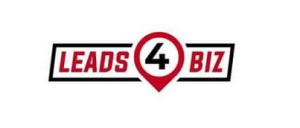
How to Go Public Without Losing Your Shirt (Part 2 of 3)
To see Part one click here
Everyone has heard of those who made it big by going public. But what about you the business owner with a small to medium sized, profitable business? Too small to go public, not enough money or management time to deal with it all.
Some of the further things to be wary of on the path to public, especially in the more traditional methods like roll ups:
Brand retention – so many companies are obsessed with acquiring businesses and changing the name above the door, they want to show off their new acquisition, but with all the years of work and trouble that have been invested, the brand is actually a valuable asset that should be retained.

brand engagement during IPO
Management – The problem with management is that it doesn’t work! In fact, most management books I have read in the last 15 years are all about how the modern hierarchical management structures just don’t fit with the current generation of talent, people now want mastery over what they do, empowerment to do it their way, and let’s face it if they have built a successful business in that space why would you want to tell them to do something different. People are too obsessed with control over results. Often results come from giving control not taking it.
Synergies and Centralization – A bit of an MBA hangover, people think the reason to roll up is to get synergies and to centralize, and yes that is one future benefit that may manifest itself, but we have gone full circle on this born out of hard-won experience and now believe post-merger, less is more, you can spend a fortune and upset everyone, staff and customers included by trying to rinse every last dollar out in the first 100 days, or whatever plan you are using. Do not forget you actually create a huge amount of value straight away by creating the scale, so be happy with that, and focus on allowing the business to just keep doing what it has always done; Stagnation post-merger should be viewed as a raging success! The challenge is how do you motivate synergies later and the Unity Agglomeration solves that.
How are the acquisitions paid for? – most roll-ups are either debt funded or investor funded, either route creates huge stress on the eventual vehicle, either pushed by investors for results or so ladened with debt they fall over (the leveraged buyout or L.B.O). you can do a straight equity merger, but you have to have a compelling plan, a possible trade sale at some point in the future won’t generally cut it.
I also mentioned listing (merge and list), the listing giving you the liquidity in the shares and reason for the mergers, why would people join a merger unless there was some visible future way out? However, there are a few things to consider when looking at an IPO (Initial Public Offering, when you place your company on the stock market), not least…
Very expensive and time-consuming, you pretty much need a board to run the business and a board to run the IPO.
You ideally need specialist non-executives and experienced board to attract investors, public company investors are a different breed to business angels and PE/VC guys.

IPO Money
Some IPOs are exits in disguise so all the talent is leaving or certainly plans to, so this can give them a bad rap.
Some IPOs are just desperate for cash, and most businesses raising money are just trying to fill a leaking bucket with more water so if you want money for ‘google ad words’ or such like, it’s going to be hard / a disaster. I don’t think IPOs are a good way to raise growth capital.
Most IPOs are pushing hard for the highest valuation because it is either an exit in disguise or they want to raise money (so want to minimize dilution).
Most IPOs forget we are a global economy, and just list in their origin country, why not take a global view of where best to IPO?
So that is quite a raft of challenges Jermey found himself working through, and the solution he arrived at is the Unity Agglomeration, He has done mergers, R.T.O.’s, roll ups, and this takes the best of each scenario and makes it work for investors and entrepreneurs alike. The best way to look at it is a sort of cooperative IPO, a group of companies from the same (ideally fragmented) industry join forces and publicly list and then grow further by acquiring more companies in the same space.
To be continued…in Part 3 and final post..
This post is based on original material produced by Jeremy Harbour, Chairman of Unity Group. I am partnered with Unity Group to assist companies to participate in the U.A.G. model.
If you think this fits your business, contact me at dan@danschwartzlive.com or +66 92 476 1032
or Sign up now for direct information


